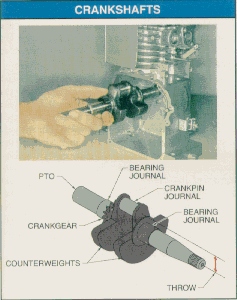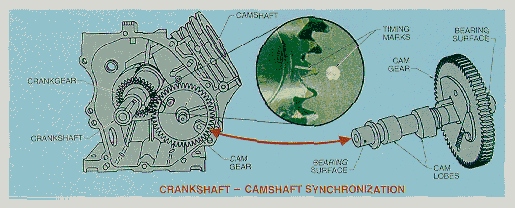
The crankshaft is an engine component that converts the linear (reciprocating) motion of the piston into rotary motion. The crankshaft is the main rotating component of an engine and is commonly made of ductile iron. Features of a crankshaft include the crankpin journal, throw, bearing journals, counterweights, crankgear, and a power take-off (PTO). A crankpin journal is a precision ground surface that provides a rotating pivot point to attach the connecting rod to the crankshaft. The throw is the measurement from the center of the crankshaft to the center of the crankpin journal, which is used to determine the stroke of an engine. The throw is equal to one-half the stroke. The longer the throw, the greater the stroke, or distance, a piston travels.
A bearing journal is a precision ground surface within which the crankshaft rotates. Bearing journals mate with bearing surfaces in the cylinder block. Most bearing surfaces are machined integrally in the cylinder block. Some engines feature a low-friction bushing or a ball or tapered roller bearing. A counterweight is a protruding mass integrally cast into the crankshaft that partially balances the forces of the reciprocating piston and reduces the load on crankshaft bearing journals.

